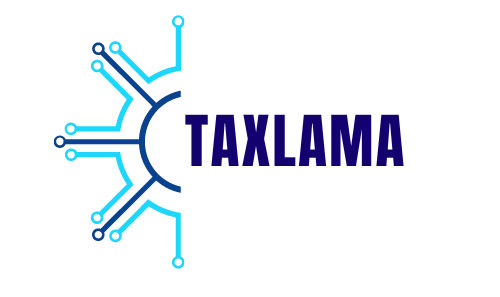What Is Whiteboard Animation?
Whiteboard is a video production technique that involves hand-drawing and recording static images on a whiteboard (or similar surface), usually accompanied by narration. These videos simulate the process of drawing on a whiteboard, allowing viewers to see illustrations come to life as they’re being created. This style is particularly effective for explaining complex concepts in a simple, visual, and engaging way.
How Does Whiteboard Animation Work?
The process of creating a whiteboard animation video typically involves several steps:
- Scriptwriting: The first step is crafting a script that clearly conveys the message or story. This script will guide the entire animation process.
- Storyboarding: After the script is finalized, a storyboard is created to visualize how the video will unfold. This includes planning the sequence of images and how they will be drawn.
- Illustration: The next step is creating the actual drawings. These illustrations are typically simple yet effective, focusing on clear lines and recognizable shapes.
- Animation: The drawings are then animated to appear as if they are being drawn in real-time. This is achieved through software that records and sequences the illustrations according to the storyboard.
- Voiceover and Sound Effects: A voiceover is added to narrate the story, often synchronized with the illustrations. Sound effects and background music may also be included to enhance the video.
- Final Editing: The final video is edited, ensuring that all elements – visuals, voiceover, and sound – are perfectly aligned.
Why Is Whiteboard Animation So Popular?
The popularity of whiteboard can be attributed to several factors:
1. Simplicity and Clarity
One of the key strengths of animation is its ability to simplify complex information. By breaking down ideas into visual components, it makes content more digestible and easier to understand. This is particularly useful in educational settings or for explaining technical products and services.
2. Engagement
The visual and auditory elements of animation work together to capture and maintain the viewer’s attention. The act of watching a drawing unfold in real-time keeps audiences engaged, making it more likely they will retain the information presented.
3. Versatility
Whiteboard can be used across various industries and for a wide range of purposes. Whether you’re looking to create an explainer video, a product demo, a training module, or even a marketing campaign, whiteboard animation can be tailored to fit your needs.
4. Cost-Effectiveness
Compared to other forms of video production, animation is relatively inexpensive. It doesn’t require live actors, elaborate sets, or expensive equipment. This makes it a cost-effective option for businesses of all sizes.
5. Memorability
Because whiteboard combines visual storytelling with narration, it helps viewers remember the content better. The combination of seeing and hearing the information reinforces the message, making it more memorable.
How Can Whiteboard Animation Benefit Your Business?
Incorporating whiteboard into your business strategy can provide numerous benefits:
1. Enhanced Communication
If your business involves explaining complex products, services, or concepts, animation can help you communicate more effectively. By breaking down complicated information into easily digestible visual segments, you can ensure that your audience understands and retains the message.
2. Increased Conversion Rates
Whiteboard videos can significantly boost conversion rates. By presenting your product or service in a clear and engaging way, you can better persuade potential customers to take action. Whether it’s signing up for a newsletter, making a purchase, or contacting your sales team, animation can guide viewers toward your desired outcome.
3. Improved SEO Performance
Embedding these videos on your website can improve your SEO rankings, making your site more visible to potential customers. Additionally, videos tend to have higher engagement rates, which further boosts your SEO performance.
4. Versatile Marketing Tool
This flexibility allows you to reach a wider audience and tailor your content to different platforms.
5. Stronger Brand Identity
Creating consistent whiteboard videos with your brand’s messaging, tone, and style can help strengthen your brand identity. By repeatedly exposing your audience to your brand’s visuals and voice, you reinforce brand recognition and loyalty.
What Are Some Common Applications of Whiteboard Animation?
animation is used in a variety of contexts, including:
1. Explainer Videos
One of the most common uses of animation is in explainer videos. They are particularly effective for introducing new products or services to the market.
2. Educational Content
Whiteboard is widely used in education to explain complex subjects. Teachers, trainers, and educators use this format to break down difficult topics into manageable parts, making learning more accessible.
3. Marketing Campaigns
Marketers use whiteboard animation to create engaging and shareable content. Whether it’s for social media, email campaigns, or websites, these videos can attract and retain viewers, leading to higher engagement rates.
4. Corporate Training
Companies use these videos to educate employees on new policies, procedures, or tools. The visual and engaging nature of whiteboard animation makes it an effective training tool.
5. Sales Presentations
Sales teams can use whiteboard animation to create compelling presentations that explain the benefits of their products or services.
How to Create Effective Whiteboard Animation Videos
Creating an effective whiteboard animation video involves careful planning and execution. Here are some tips to help you create a successful video:
1. Start with a Strong Script
The script is the foundation of your whiteboard animation video. It should be clear, concise, and focused on delivering your key message. Avoid jargon or overly complex language, and ensure that the script flows logically.
2. Focus on Clear Visuals
The visuals in your whiteboard animation should be simple and easy to understand. Use clear lines, recognizable shapes, and avoid cluttering the screen. Remember, the goal is to make the content as easy to digest as possible.
3. Use a Consistent Style
Consistency is key in whiteboard animation. Use a consistent drawing style, color scheme, and font throughout the video. This helps create a cohesive and professional look.
4. Add a Compelling Voiceover
A strong voiceover can enhance your whiteboard animation video by providing context and guiding the viewer through the content. Choose a voice that matches the tone of your message and ensure that it’s clear and easy to understand.
5. Include a Call to Action
At the end of your whiteboard animation video, include a clear call to action (CTA). Whether it’s directing viewers to your website, encouraging them to make a purchase, or asking them to share the video, a strong CTA can drive your desired outcomes.
What Are the Challenges of Whiteboard Animation?
While whiteboard animation has many benefits, it’s not without its challenges:
1. Time-Consuming Production
Creating a whiteboard animation video can be time-consuming, especially if you’re doing it manually. The process of scripting, storyboarding, illustrating, animating, and editing requires careful attention to detail and can take longer than other types of video production.
2. Limited Visual Appeal
While whiteboard animation is effective for simplifying complex information, it may lack the visual appeal of more dynamic or colorful video formats. This can be a drawback if you’re trying to create content that’s visually striking or emotionally engaging.
3. Requires Skill and Experience
Creating a high-quality whiteboard animation video requires a certain level of skill and experience. If you’re not familiar with the process, you may need to hire a professional animator, which can add to the cost.
Is Whiteboard Animation Right for Your Business?
Deciding whether whiteboard animation is right for your business depends on your goals, audience, and content strategy. Here are some factors to consider:
- Target Audience: It’s particularly effective for reaching professionals, educators, and learners.
- Content Complexity: If you’re dealing with complex products, services, or concepts, whiteboard animation can help break down the information into easily digestible pieces.
- Budget: Consider your budget when deciding whether to use whiteboard animation. While it’s generally cost-effective, creating a high-quality video may require professional help.




